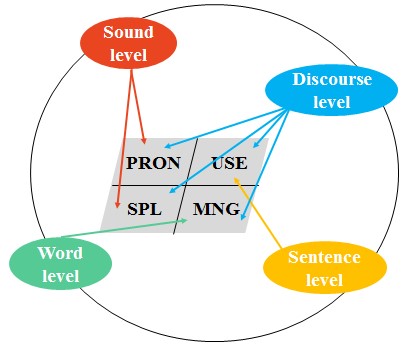English Vocabulary Teaching Strategies Based on Aesthetic Choices
Abstract
Under the background of quality education reform, aesthetic education, as a crucial part of people’s all-round development, has its unique value. Thus, aesthetic education has become more important and should be integrated into teaching fully. In English teaching, helping students experience the beauty of speech is one of the ways to achieve it. Meanwhile, relevant requirements have been stipulated in Ordinary High School English Curriculum Standards (2017 edition 2020 revision). Vocabulary teaching strategies are systematic behaviors that seek to maximize vocabulary teaching effectiveness under the guidance of teachers’ cognition of certain teaching philosophies and teaching situations. It is so crucial for vocabulary teaching that aesthetic education should be integrated into it. Therefore, this research attempts to propose vocabulary teaching strategies based on aesthetic choices. These strategies include: connecting the vowels closely to teach the pronunciation and spelling of vocabulary based on the spelling rules; using phonetic rhetoric in sentence construction to make it more readable and rhythmic; using figures of speech in sentence construction to give learners a deeper impression; making example sentence symmetric, succinct, and simple; and make vocabulary teaching a logical and systematic whole.
Downloads
References
Chen, W. H. (2006). A Study on Acquisition of Chinese Learners: An Approach of Cognitive Psychology. Wuhan: East China Normal University, p. 88.
Fan, J. C. (1992). Appreciation of English Rhetoric. Shanghai: Shanghai Jiao Tong University. p.1.
Jin, J., & Wulan, T. (2018). Aesthetic Dimension of Vocabulary Choice: A Rethinking on College English Writing. Journal of Henan Engineering Institute, 4, 89-93.
Li, F. Q. (2017). Interpreting Basic Strategies for Aesthetic Choices of Language From the Perspective of Language Level. Foreign Language Teaching in Schools, 6, 1-7.
Luo, X. S. (1995). On the Initiation and Emergence of Language Aesthetics. Journal Yunnan University, 3, 73-79.
O’Malley, J. M., & Chamot, A. U. (1990). Learning Strategies in Second Language Acquisition. Shanghai: Shanghai Foreign Language Education Press, pp. 1. https://doi.org/10.1017/CBO9781139524490
Oxford, R. L. (2002). Language learning strategies in a nutshell: Update and ESL suggestions.Methodology in language teaching: An Anthology of Current Practice, 4(3), 124-132. https://doi.org/10.1017/CBO9780511667190.018
People’s Republic of China. (2017). Ordinary High School English Curriculum Standards (2017 edition 2020 revision). Beijing: People’s Education Press, pp. 22-54.
Qian, G. L. (2004). Aesthetic linguistics: Beauty of Linguistics and Beauty of Parole (2nd Edition). Beingjing: High Education Press.
Shu, D. F., & Zhuang, Z. X. (1996). Modern Foreign Language Teaching: Theory, Time and Methodology. Shanghai: Shanghai Foreign Language Education Press, pp. 51-172.
Xu, S. H. (1995). An Outline of Language Aesthetics”. Foreign Language Research, 2, 1-8.
Zhang, X. C. (2019). Book for Senior High School English Teachers. Beijing: People’s Education Press, pp.10-13.


This work is licensed under a Creative Commons Attribution 4.0 International License.
Copyright for this article is retained by the author(s), with first publication rights granted to the journal.
This is an open-access article distributed under the terms and conditions of the Creative Commons Attribution license (http://creativecommons.org/licenses/by/4.0/).









1.png)









1.png)











